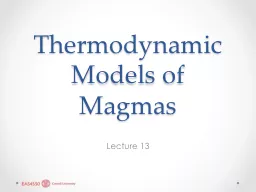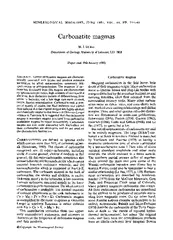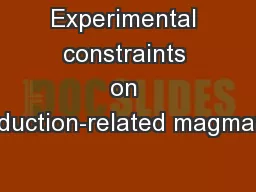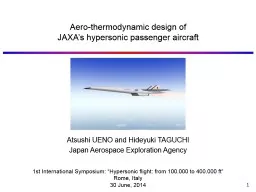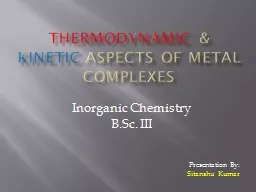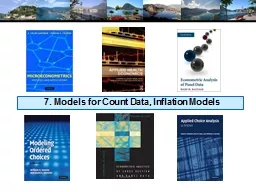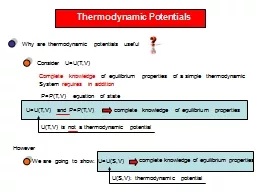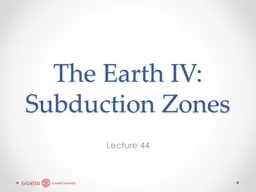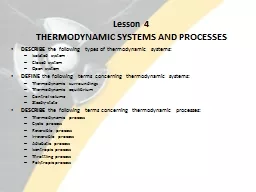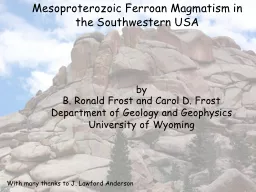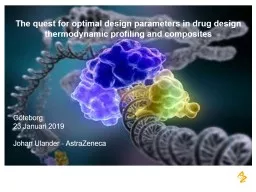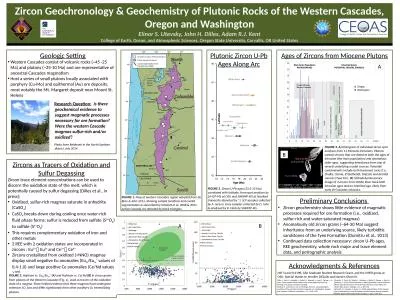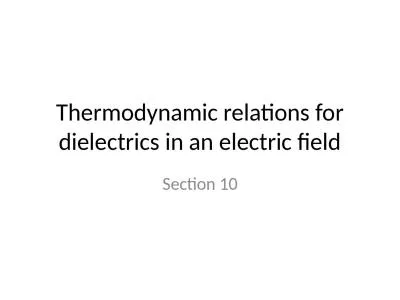PPT-Thermodynamic Models of Magmas
Author : yoshiko-marsland | Published Date : 2017-09-16
Lecture 13 Silicate Magmas Basic structural unit of silicates solid amp liquid is the silica tetrahedron These are variously joined by shared or bridging oxygens
Presentation Embed Code
Download Presentation
Download Presentation The PPT/PDF document "Thermodynamic Models of Magmas" is the property of its rightful owner. Permission is granted to download and print the materials on this website for personal, non-commercial use only, and to display it on your personal computer provided you do not modify the materials and that you retain all copyright notices contained in the materials. By downloading content from our website, you accept the terms of this agreement.
Thermodynamic Models of Magmas: Transcript
Download Rules Of Document
"Thermodynamic Models of Magmas"The content belongs to its owner. You may download and print it for personal use, without modification, and keep all copyright notices. By downloading, you agree to these terms.
Related Documents

